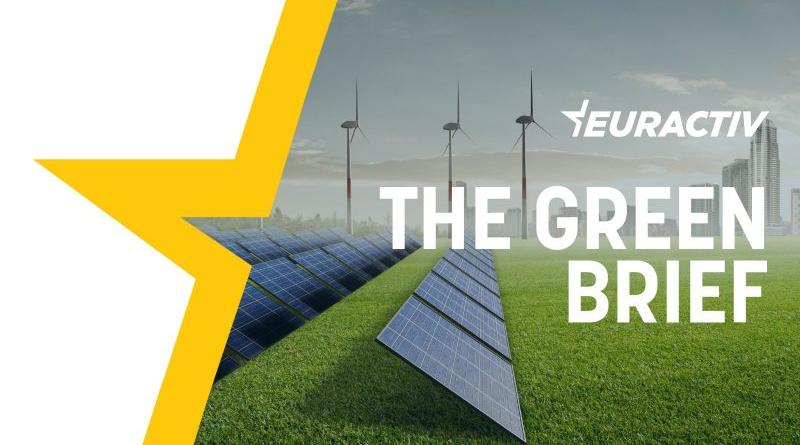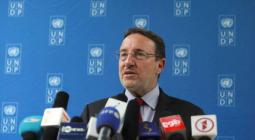Understanding the environmental cost of the Ukraine war

Welcome to EURACTIV’s Green Brief, our weekly selection of energy and environment news from across Europe. To subscribe, follow this link. You can also subscribe to our daily newsletter here and to our comprehensive weekly update here.
After the world celebrated Earth Day on Saturday (22 April), now is a good moment to take stock of the environmental destruction brought by the Kremlin’s war on Ukraine.
Russia’s full-scale military aggression against Ukraine, launched just over a year ago, has resulted in hundreds of thousands of casualties and devastated the country’s economy and environment.
According to an international assessment, the cost of reconstruction has grown to €383 billion as of 24 February 2023.
In addition to the immeasurable human suffering, the war has significantly harmed Ukraine’s environment and biodiversity, slowed progress towards climate targets and sustainable development goals (SDGs) and even reversed some previous gains.
Ukraine occupies less than 6% of Europe’s land mass but is home to 35% of its biodiversity. Thanks to its favourable location, it is home to more than 74,000 plant and animal species, many rare, relict, and endemic, including European bison and brown bears, lynx, wolves and sturgeon.
Since the beginning of the war, Russian forces have targeted a range of crucial infrastructures such as chemical plants, water facilities, nuclear power plants, fields, forests, and wildlife reserves – causing destruction, biodiversity loss and pollution along the way.
The Ukrainian criminal code foresees imprisonment sentences to punish those causing environmental disasters, including the “mass destruction of flora and fauna, poisoning of air or water resources”. The country’s environment minister, Ruslan Strilets, is resolute in holding Russia accountable for the devastating impact of the war on the region’s natural environment.
“Our state is a habitat of about 74,000 species of flora and fauna. By destroying our home, Russia is also destroying their home. Russian occupiers are trying to destroy all of Ukraine, thus endangering more than a third of Europe’s biodiversity,” Strilets said during his speech in Montreal at COP15.
To date, 2,369 consequences of military actions with a severe negative impact on the environment have been registered on the EcoZagroza platform, set up by the ministry and the United Nations Environment Programme (UNEP) to collect reports of environmental damage.
Due to the war, 20% of protected natural areas were damaged, and approximately 80 animal species are at risk of extinction. Russians have taken control of 10 national parks, eight reserves, and two biosphere reserves, and in some of these areas, they are permitting the hunting of protected animals.
Among the many environmental casualties of the war are dolphins, with hundreds of them found dead along the shores of the Black Sea.
Scientists have attributed this to several factors, such as the harmful effects of sonar, which damages their ability to hunt, as well as the usage of phosphorus incendiaries which causes burns on their bodies. Additionally, explosions caused by the conflict can result in dolphins experiencing embolisms and decompression sickness, leading them to rise to the surface.
A recent report by the Kyiv School of Economics depicts a horrible situation where environmental pollution has risen sharply as hundreds of industrial enterprises and critical infrastructure sites have been damaged.
Forests have also suffered significant damage, with fires caused by ammunition explosions or deliberate arson related to warfare tactics. In addition, significant forest areas have suffered from mechanical damage caused by military manoeuvres and ammunition explosions, which leads to the weakening or death of forest plantations.
Some 298,000 hectares of forest and 1,438,000 hectares of grass fires were recorded in the combat zone, which, together with the burning of oil products, caused significant air pollution estimated at 5.5 million tonnes of pollutants since the start of the war.
Holding Russia accountable
Ukrainian authorities have drawn attention to the environmental damage caused by the war since its very beginning. If the country succeeds in its attempt to recognise ecological damage, this could set a precedent for reinforcing an international mechanism against environmental crimes in military conflicts.
However, building a case against Russia in this sense is not easy, as the Stockholm International Peace Research Institute explains.
The International Criminal Court does not recognise ecocide as an international crime under the Rome Statute.
While international humanitarian law does prohibit the employment of “methods or means of warfare which are intended, or may be expected, to cause widespread, long-term and severe damage to the natural environment”, the absence of specific thresholds for these criteria, however, is a challenge when building a case.
There are also precedents of compensation for environmental destruction at international level. In 1991, the United Nations Security Council required Iraq to provide reparations for the devastation caused during its aggression towards Kuwait, including environmental damage and the exhaustion of natural resources.
However, due to Russia’s veto power in the Security Council, this solution is not feasible in the current conflict, according to the Stockholm International Peace Research Institute.
And even if the European Union is now promising a ‘Marshall Plan for Ukraine’, restoring the biodiversity and ecosystems that have been devastated, cleaning up the polluted soil, water, and air, as well as addressing the CO2 emissions that are undermining climate goals, will likely require several decades, if not longer.
“There can be no effective climate policy without peace on the Earth,” said the President of Ukraine, Volodymyr Zelenskyy, during a speech at COP27.
Perhaps now is a good moment to consider the inclusion of ecocide in the list of international crimes punishable under international law, similar to what is currently being considered in the EU.
– Valentina Romano
cover photo:Subscribe to EURACTIV's Green Brief, where you’ll find the latest roundup of news covering energy & environment from across Europe.



